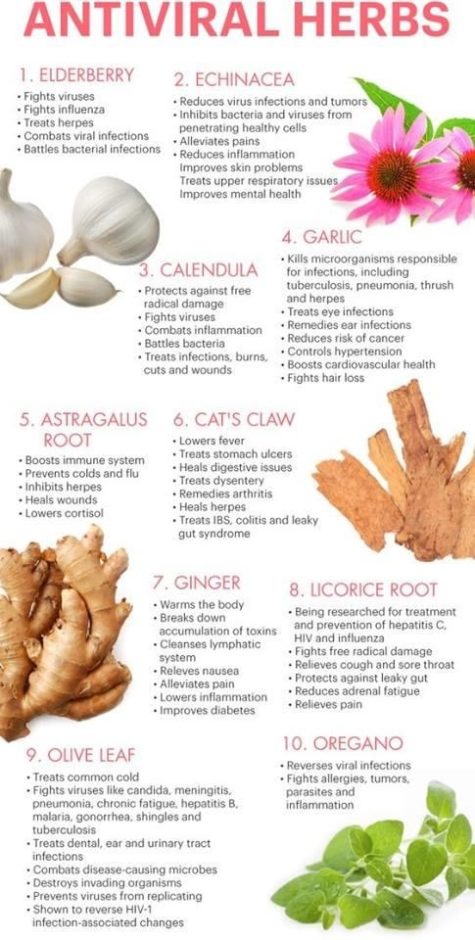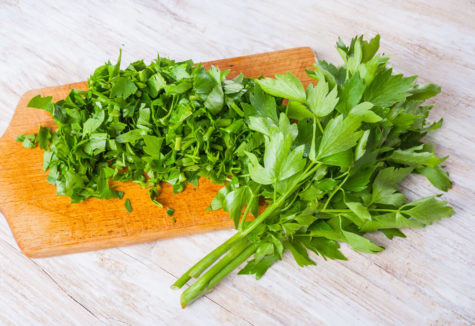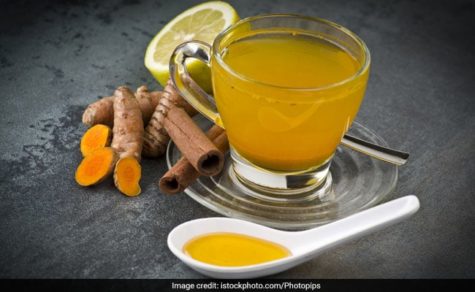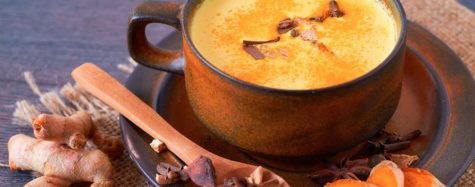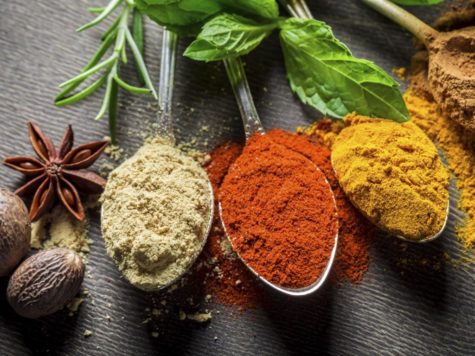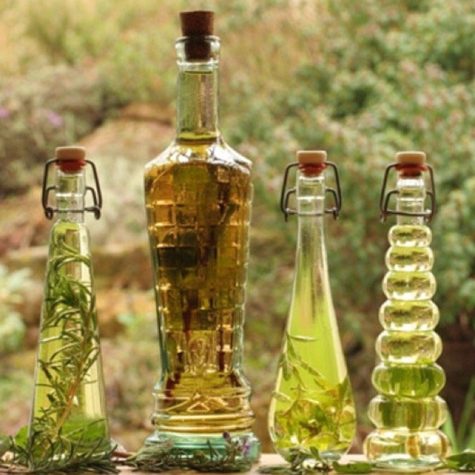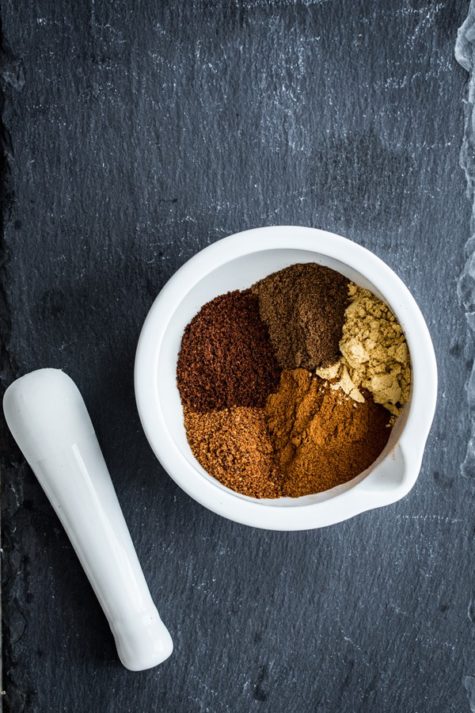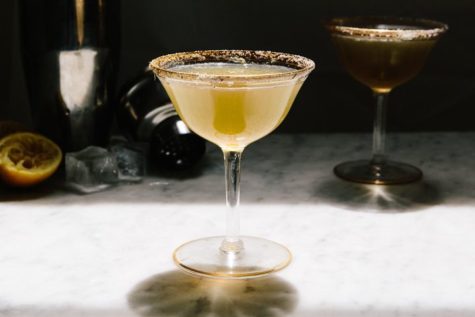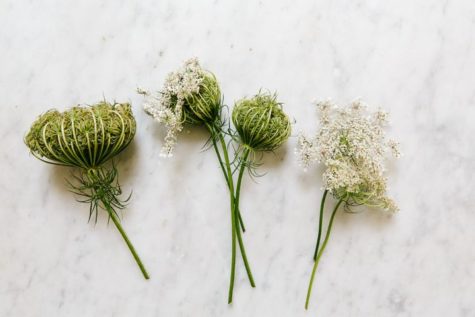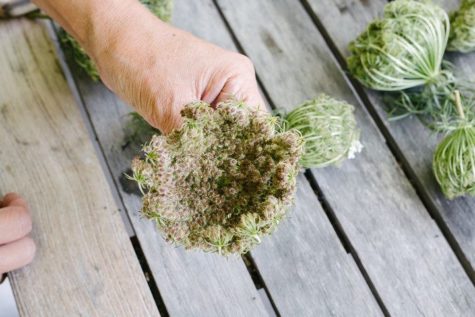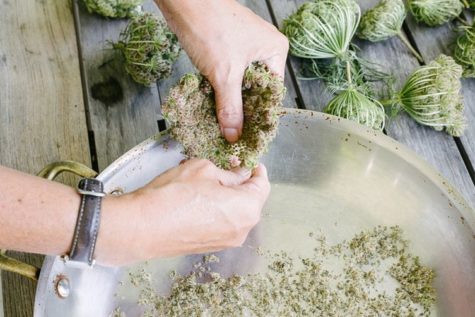Herbs and Spices
Antiviral Herbs
Lovage Vegetarian Stock
Lovage is an ancient healing herb, mostly used for its diuretic properties in cases of water retention and urinary difficulties, and also for pain and swelling (inflammation) of the lower urinary tract, for preventing of kidney stones, and to increase the flow of urine during urinary tract infections.
The seeds, leaves and leaf stems have a strong, earthy, celery flavor that enriches soups and stews and is particularly useful in vegetarian dishes, with rice, vegetable stuffings and nut roasts.
Here is a recipe for a vegetarian stock.
- 4 c. washed lovage leaves
- 6 c. water
- freshly ground pepper.
Simmer about 10 minutes. Use in soups, sauces and stews. Can be frozen.
Cinnamon Turmeric Tea
Here is a recipe for Cinnamon Turmeric Tea to flush inflammation naturally.
Inflammation has been found to be the root of most diseases and ailments, so it is of high importance to fight it and thus improve overall health. The combination of cinnamon and turmeric is one of the most delicious and powerful natural ways to fight inflammation in the body.
These spices are inexpensive, calorie-free and easy to find in most supermarkets and natural foods stores. Because turmeric and cinnamon are safe with no side effects, they may be worth a try for their potential health benefits. Keep in mind that ground spices release flavor more slowly than whole spices.”
Green tea, is a rich source of polyphenols, that fight free radicals and prevent chronic diseases. Green tea regulates blood sugar, helps weight loss, fights inflammation in the gut, and lowers bad cholesterol while increasing good cholesterol. Also, it boosts liver health and the cognitive function, helps weight loss, and lowers risk of heart disease.
Here is how to prepare this miraculous drink:
Cinnamon Turmeric Iced Tea Recipe
Ingredients:
- 1/4 tsp. cinnamon
- 1/8 tsp. turmeric
- 1-2 Tbsp. black or green loose leaf tea
- 1 tsp honey
- lemon slices, optional
Instructions:
Add the ingredients to the bottom of a French press, add hot water to about the halfway point, and leave to steep for 5 minutes. Stir once press and leave the mixture to cool.
Pour the tea in a mug, and add the lemon slices. Enjoy and naturally fight inflammation in the body!
Source: Healthy Food House
Moon Milk
In Ayurveda (one of the oldest systems of natural healing in the world), warm milk is a common remedy for sleeplessness. This recipe features nutmeg (a natural sleep aid) and ashwagandha (an adaptogen that helps your body deal with stress) to shepherd you to dreamland. Look for ashwagandha at health food stores, Indian specialty stores, or Whole Foods.
Ingredients:
- 1 cup whole milk or unsweetened nut milk (such as hemp, almond, or cashew)
- ½ teaspoon ground cinnamon
- ½ teaspoon ground turmeric
- ¼ teaspoon ground ashwagandha (or another adaptogen, like shatavari or astralagus)
- 2 pinches of ground cardamom
- Pinch of ground ginger (optional)
- Pinch of ground nutmeg
- Freshly ground black pepper
- 1 teaspoon virgin coconut oil or ghee
- 1 teaspoon honey, preferably raw
Recipe Preparation:
Bring milk to a simmer in a small saucepan over medium-low heat. Whisk in cinnamon, turmeric, ashwagandha, cardamom, ginger, if using, and nutmeg; season with pepper. Whisk vigorously to incorporate any clumps. Add coconut oil, reduce heat to low, and continue to cook until warmed through, 5–10 minutes (the longer you go, the stronger the medicine). Remove from heat and let cool slightly. Stir in honey (you want to avoid cooking honey or you’ll destroy its healing goodness). Pour into a mug, drink warm, and climb right into bed.
Found at: Bon Appetit
The Vitamins and Minerals in Your Spice Rack
Did you know that the spices you add to your food not only give a nice flavor boost, they also add nutrition? It was a surprise to me too. Here’s a cool list! The spices listed first, and shown in red, indicate there are large amounts of that nutrient in that particular spice. Interestingly, Black pepper, Cayenne, Ginger, and Turmeric are high on almost every list!
Vitamin A
- Black pepper, Cayenne, Chili, Cloves, Ginger, Mustard seed, Turmeric
- Allspice, Anise, Basil, Caraway Seed, Chervil, Chives, Cumin, Curry, Dill, Fennel, Fenugreek, Marjoram, Nutmeg, Oregano, Paprika, Parsley, Peppermint, Rosemary, Sage, Savory, Saffron, Tarragon, Thyme
B1 – Thiamine
- Mustard seed
B2 – Riboflavin
- Chili
- Paprika
B3 – Niacin
- Black pepper, Cayenne, Cinnamon, Chili, Ginger, Mustard seed, Turmeric
- Allspice, Anise, Caraway Seed, Chervil, Coriander, Cumin, Curry, Dill, Fennel, Fenugreek, Garlic, Marjoram, Nutmeg, Oregano, Paprika, Parsley, Peppermint, Sage, Savory
B5 – Pantothenic Acid
- Anise, Paprika
B6 – Pyridoxine
- Cayenne, Chili, Turmeric
- Curry, Dill, Fenugreek, Garlic, Paprika, Rosemary, Sage, Savory
B9 – Folic acid
- Black pepper, Cayenne, Cinnamon, Chili, Ginger, Mustard seed, Turmeric
- Allspice, Anise, Basil, Caraway Seed, Chervil, Chives, Cumin, Curry, Fenugreek, Garlic, Marjoram, Nutmeg, Oregano, Paprika, Parsley, Peppermint, Rosemary, Saffron, Sage, Tarragon, Thyme
Betaine
- Black pepper, Cinnamon, Chili, Ginger, Mustard seed, Turmeric
- Basil, Curry, Garlic, Oregano, Paprika
Vitamin C
- Black pepper, Cayenne, Cinnamon, Chili, Cloves, Ginger, Mustard seed, Turmeric
- Allspice, Anise, Basil, Caraway Seed, Chervil, Chives, Coriander, Curry, Cumin, Dill, Fennel, Fenugreek, Garlic, Marjoram, Nutmeg, Oregano, Paprika, Parsley, Peppermint, Rosemary, Saffron, Sage, Savory, Tarragon, Thyme
Calcium
- Black pepper, Cayenne, Cinnamon, Chili, Cloves, Ginger, Mustard seed, Turmeric
- Allspice, Anise, Basil, Cardamom, Chervil, Chives, Coriander, Cumin, Curry, Dill, Fennel, Garlic, Marjoram, Nutmeg, Oregano, Paprika, Parsley, Peppermint, Rosemary, Saffron, Sage, Salt, Savory, Tarragon, Thyme
Choline
- Black pepper, Cayenne, Cinnamon, Chili, Ginger, Mustard seed, Turmeric
- Basil, Caraway Seed, Chives, Cumin, Curry, Garlic, Marjoram, Nutmeg, Oregano, Paprika, Parsley, Sage, Thyme,
Copper
- Black pepper, Ginger
- Anise, Cardamom, Cumin, Curry, Fennel, Fenugreek, Nutmeg, Salt
Vitamin E
- Cayenne, Cinnamon, Chili, Ginger, Mustard seed, Turmeric
- Caraway Seed, Cumin, Curry, Garlic, Oregano, Paprika, Parsley, Sage, Thyme
Dietary Fiber
- Black pepper, Cayenne, Chili, Turmeric
- Allspice, Anise, Basil, Caraway Seed, Chervil, Chives, Coriander, Cumin, Curry, Dill, Fennel, Fenugreek, Garlic, Marjoram, Nutmeg, Oregano, Paprika, Parsley, Peppermint, Rosemary, Saffron, Sage, Savory, Tarragon, Thyme
Fluoride
- Black pepper
- Salt
Iron
- Black pepper, Cayenne, Cinnamon, Chili, Ginger, Mustard seed, Turmeric
- Allspice, Anise, Basil, Cardamom, Chervil, Coriander, Cumin, Curry, Dill, Fennel, Fenugreek, Garlic, Marjoram, Nutmeg, Oregano, Peppermint, Paprika, Parsley, Rosemary, Saffron, Sage, Salt, Savory, Tarragon, Thyme
Vitamin K
- Black pepper, Cayenne, Cinnamon, Chili, Mustard seed, Turmeric
- Basil, Chives, Cumin, Curry, Marjoram, Oregano, Paprika, Parsley, Sage, Thyme
Magnesium
- Black pepper, Cayenne, Cinnamon, Chili, Cloves, Ginger, Mustard seed, Turmeric
- Allspice, Anise, Basil, Caraway Seeds, Chervil, Chives, Coriander, Cumin, Curry, Dill, Fennel, Fenugreek, Garlic, Marjoram, Nutmeg, Oregano, Paprika, Parsley, Peppermint, Rosemary, Saffron, Sage, Salt, Savory, Tarragon, Thyme
Manganese
- Black pepper, Cayenne, Cinnamon, Chili, Ginger, Mustard seed, Turmeric
- Allspice, Anise, Caraway Seed, Coriander, Cumin, Curry, Dill, Fennel, Fenugreek, Marjoram, Nutmeg, Paprika, Parsley, Rosemary, Saffron, Sage, Salt, Savory, Thyme
Omega 3 – Fatty Acids
- Black pepper, Cayenne, Chili, Cinnamon, Ginger, Mustard seed, Turmeric
- Allspice, Basil, Caraway Seed, Chives, Cumin, Curry, Garlic, Marjoram, Oregano, Paprika, Peppermint, Rosemary, Saffron, Sage, Tarragon, Thyme
Omega 6 – Fatty Acids
- Black pepper, Cayenne, Chili, Cinnamon, Ginger, Turmeric
- Allspice, Anise, Basil, Caraway Seed, Chervil, Chives, Coriander, Cumin, Curry, Fennel, Garlic, Marjoram, Nutmeg, Oregano, Paprika, Parsley, Peppermint, Rosemary, Saffron, Sage, Tarragon, Thyme
Phosphorus
- Black pepper, Cayenne, Chili, Cinnamon, Ginger, Mustard seed, Turmeric
- Allspice, Anise, Basil, Caraway Seed, Chervil, Chives, Coriander, Cumin, Curry, Dill, Fennel, Fenugreek, Garlic, Marjoram, Nutmeg, Oregano, Paprika, Parsley, Peppermint, Rosemary, Saffron, Sage, Savory, Tarragon, Thyme
Phytosterols
- Black pepper, Cayenne, Chili, Cinnamon, Ginger, Mustard seed, Turmeric
- Allspice, Basil, Caraway Seed, Chives, Coriander, Cumin, Curry, Fennel, Fenugreek, Garlic, Marjoram, Nutmeg, Oregano, Paprika, Peppermint, Rosemary, Sage, Savory, Tarragon, Thyme
Potassium
- Black pepper, Cayenne, Cinnamon, Chili, Cloves, Ginger, Turmeric
- Allspice, Anise, Basil, Caraway Seed, Chervil, Chives, Coriander, Cumin, Curry, Dill, Fennel, Fenugreek, Garlic, Marjoram, Nutmeg, Oregano, Paprika, Parsley, Peppermint, Rosemary, Saffron, Sage, Savory, Tarragon, Thyme
Protein
- Black pepper, Cayenne, Chili, Ginger, Mustard seed, Turmeric
- Allspice, Anise, Basil, Caraway Seed, Chervil, Chives, Coriander, Cumin, Curry, Dill, Fennel, Fenugreek, Garlic, Marjoram, Nutmeg, Oregano, Paprika, Parsley, Peppermint, Rosemary, Saffron, Sage, Savory, Tarragon, Thyme
Selenium
- Black pepper, Cayenne, Chili, Cinnamon, Ginger, Mustard seed, Turmeric
- Allspice, Anise, Caraway Seed, Chervil, Coriander, Cumin, Curry, Fenugreek, Garlic, Marjoram, Nutmeg, Oregano, Paprika, Parsley, Rosemary, Saffron, Salt, Sage, Savory, Thyme
Sodium
- Black pepper, Cayenne, Chili, Cinnamon, Ginger, Turmeric
- Allspice, Anise, Basil, Caraway Seed, Chervil, Chives, Coriander, Cumin, Curry, Dill, Fennel, Fenugreek, Garlic, Marjoram, Nutmeg, Oregano, Paprika, Parsley, Peppermint, Rosemary, Saffron, Sage, Salt, Savory, Tarragon, Thyme
Zinc
- Black pepper, Cayenne, Chili, Cinnamon, Ginger, Turmeric
- Allspice, Anise, Caraway Seed, Chervil, Coriander, Cumin, Curry, Dill, Fennel, Fenugreek, Garlic, Marjoram, Nutmeg, Paprika, Parsley, Rosemary, Sage, Salt, Savory, Thyme
Source: Nutrition Data
How to Make Herbal Vinegars
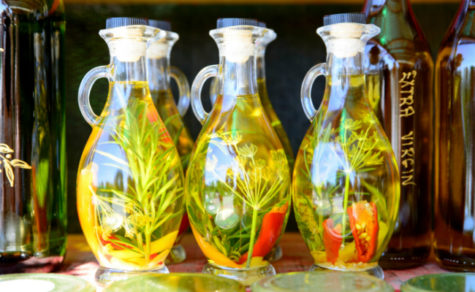
You can infuse any plant matter into vinegar to create your own funky blends! Although the preferred vinegar to use is organic apple cider you can use white or red wine vinegar too. A tip for jars is to check out second hand shops; there are some really nice bottles to be had out there!
Place several plants of your choice into the bottle. Fresh (clean and free from moisture) plant matter is best to use. You can even make an onion and garlic vinegar! Seal the bottle or jar you are using.
- Word of caution:
If you use a mason jar do not use the metal lid plate, use plastic because the acids can corrode the lid.
Let sit in a cool area (does not have to be dark) for 5 weeks; and after 2 weeks there will be flavor and you can test it. If you want it stronger let it sit longer. (I let my onion and garlic vinegar sit for 3 months before using it – wow!!)
Be sure to label your vinegar with what it is and the date you made it.
From: Edible Wild Food
How to Make Herbal Oils
Oils infused with herbs are a great way to utilize the healing properties of plants which contain volatile oils and fats.
Plants containing volatile oils are generally those commonly used in aromatherapy but they can be used as a salad oil too. Aromatic plants such as lavender, rosemary, thyme, sage, peppermint, chamomile, rose, yarrow, juniper and pine all make great oils.
You can use a variety of different oils as the base for the infusion. Olive oil is classic for the leafy herbs, sunflower, sweet almond, jojoba, or apricot oil all make a great base for creams and salves.
How to Infuse
You can use dried or fresh plant material, although fresh is generally best (except calendula-dry). If using fresh herbs, pick them on a dry day after the sun has dried the morning dew.
Make sure you pick clean plant matter; this is particularly important as you are not going to wash the plants. It must be as dry as possible to prevent spoilage, if there is any dirt brush it off with a soft-bristle brush or simply shake.
If using leaves such as comfrey or plantain, it’s good to let them wilt overnight to reduce some of the water content but flowers are best used fresh.
Chop fresh leafy herbs finely and lightly fill a sterilized, dry jar with the material. It’s important to cut the herb first as it exposes more of the plant to the oil, making for a better infusion. Flowers can be put in whole and dried herbs will most likely come already cut.
Fill the jar almost to the brim with oil because an air gap will promote oxidation and spoilage. Stir the contents with a wooden chopstick until all air bubbles have dispersed then place lid on.
You can leave it to infuse on a sunny windowsill or in indirect light.
Stir every day for the first two weeks then leave to infuse for another two to four, that’s four to six weeks in total. Calendula and some other oils are nice to double infuse- leave for 3 weeks, strain, then fill the jar with fresh flowers and pour the partially infused oil back on top and repeat the process.
Don’t forget to label your jars so you remember when to strain them. Strain through a sieve covered in cheesecloth or a jelly bag. If you used fresh material it is wise to let it stand for a week and check if any water has settled in the bottom of the jar. If so pour off the oil and discard the water.
Bottle the infused oil and be sure to label it including the best before date of the oil from the original bottle.
From: Edible Wild Food
Pumpkin Pie Spice
Pumpkin Pie Spice is a blend of spices associated with the Fall season, Halloween, and Thanksgiving. It’s very easy to make.
To start, you’ll need all of three minutes and the following ingredients: 3 tablespoons ground cinnamon, 2 teaspoons ground ginger, 2 teaspoons ground nutmeg, 1 ½ teaspoons ground allspice and 1 ½ teaspoons ground cloves. Mix the spices together in a small bowl and take a little whiff. (Smells like heaven, right?) Store the mixture in a clean small jar or spice container. See? So easy.
You can customize your personal blend by bumping up the ginger and cloves, for a sharper, more robust flavor, or go light on those and amp up the cinnamon for a softer flavor. When you make it yourself, you can make it JUST right, and that’s worth doing at least once every Autumn.
Source: Betty Crocker
Queen Anne’s Lace Cognac Apéritif
On late-summer evenings, I take the chill off with a cognac apéritif, the rim of the glass dipped in spicy Queen Anne’s Lace.
For the rim:
- 3 tablespoons dried Queen Anne’s Lace fruits
- 1 1/2 tablespoons fine sugar
Crush the dried Queen Anne’s Lace fruits with the sugar and mix thoroughly. (To save effort for multiple drinks, we made a larger batch with the same 2:1 ratio.) Spread the mixture on a saucer or plate that is larger than the diameter of the glass rim. Moisten the rim of the glass by dipping it upside down in a shallow bowl of water and let the excess water drip off for a few seconds. Dip the moistened rim in the Queen Anne’s Lace/sugar mixture, pressing down firmly. The mixture should cling to the rim where moistened. Gently shake off any excess.
Note: Instructions on collecting the Queen Anne’s Lace fruits can be found here: Queen Anne’s Lace
For the drink:
- 2 ounces cognac (I suggest Pierre Ferrant 1840)
- 3/4 ounce fresh Meyer lemon juice or bergamot juice
- 3/4 ounce honey syrup (equal parts honey and hot water)
- 1 teaspoon dried Queen Anne’s Lace fruit
In a cocktail shaker, combine cognac, lemon juice syrup, and ice. Shake vigorously for half a minute or until chilled. Pour the mixture through a strainer (to remove the Queen Anne’s Lace bits) and into the rimmed glass. Serve immediately.
Makes 1
Important Notice:
Historically, Queen Anne’s lace was used for medicinal and contraceptive purposes. Avoid it if you are pregnant, and check with your doctor if you are currently taking medications. More information about this wild herb can be found here: Encyclopedia of Herbology – Wild Carrot
The carrot family contains a number of poisonous look-alikes, most notably poison hemlock. Once the fruit has formed, it is easy to tell them apart, but less so when the plants still only have leaves.
When foraging, always choose high-quality landscapes (not next to the highway or on post-industrial or sprayed sites), and make sure to obtain permission if it is not your own yard. If possible, go out with an experienced forager.
Found at: Food 52
Queen Anne’s Lace
Queen Anne’s Lace looks delicate, but its fruit’s pungent flavor and spice is anything but dainty. The flowers of the wild carrot, or Queen Anne’s Lace, are as edible as the stringy root — but the culinary gem is its fruit. Because each fruit is so small and the harvest window is relatively short, I hadn’t even noticed them until recently. But when I looked closely, I could see that each cluster was full of hundreds of small, eye-shaped fruits.
I picked the bunches with the largest fruit (some of the fruit was red, and some was still green), checking the aroma by breathing deep into their flower nests. The scent can vary, but they are heavily fragrant — oftentimes peppery with hints of coriander and carrot. This complexity is the essence of wild flavors.
To harvest, clip the cluster, remove the fruits from the frame, and dry them under gentle heat (such as a heat lamp or dehyrdrator); you can store them whole to use as a spice or seasoning at will. Once they dry, their strong aroma will dissipate, but give them a quick grind in the Cuisinart, blender, or mortar and pestle and — violà! — the pungent fragrance returns.
One of my favorite ways to use this spice is to sprinkle it on top of carrot cake for an added kick. It’s also wonderful in carrot salads, caramelized on top of crème brulée, or infused into jelly.
Important Note:
Historically, Queen Anne’s lace was used for medicinal and contraceptive purposes. Avoid it if you are pregnant, and check with your doctor if you are currently taking medications. More information about this wild herb can be found here: Encyclopedia of Herbology – Wild Carrot
The carrot family contains a number of poisonous look-alikes, most notably poison hemlock. Once the fruit has formed, it is easy to tell them apart, but less so when the plants still only have leaves.
When foraging, always choose high-quality landscapes (not next to the highway or on post-industrial or sprayed sites), and make sure to obtain permission if it is not your own yard. If possible, go out with an experienced forager.
Found at: Food 52
